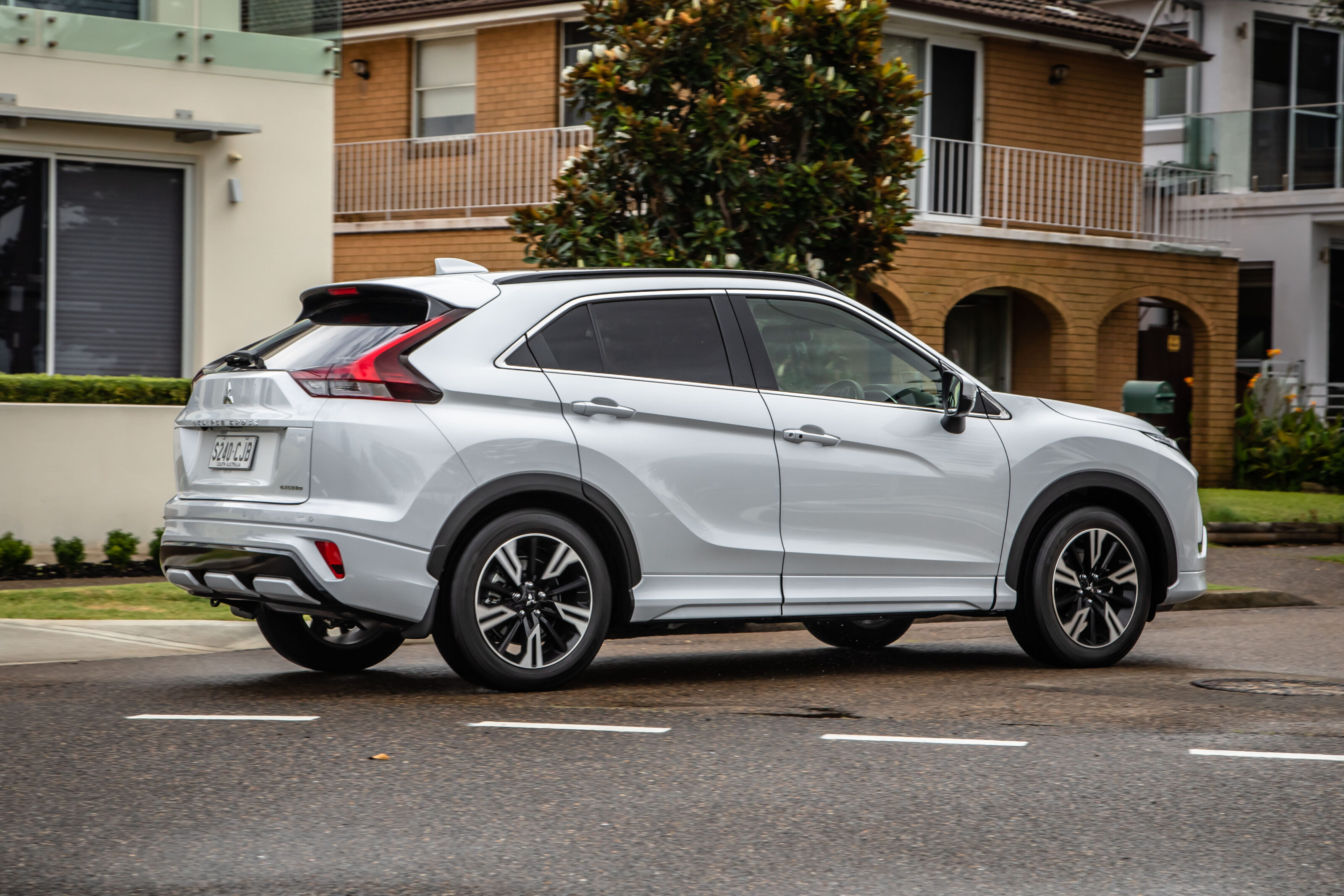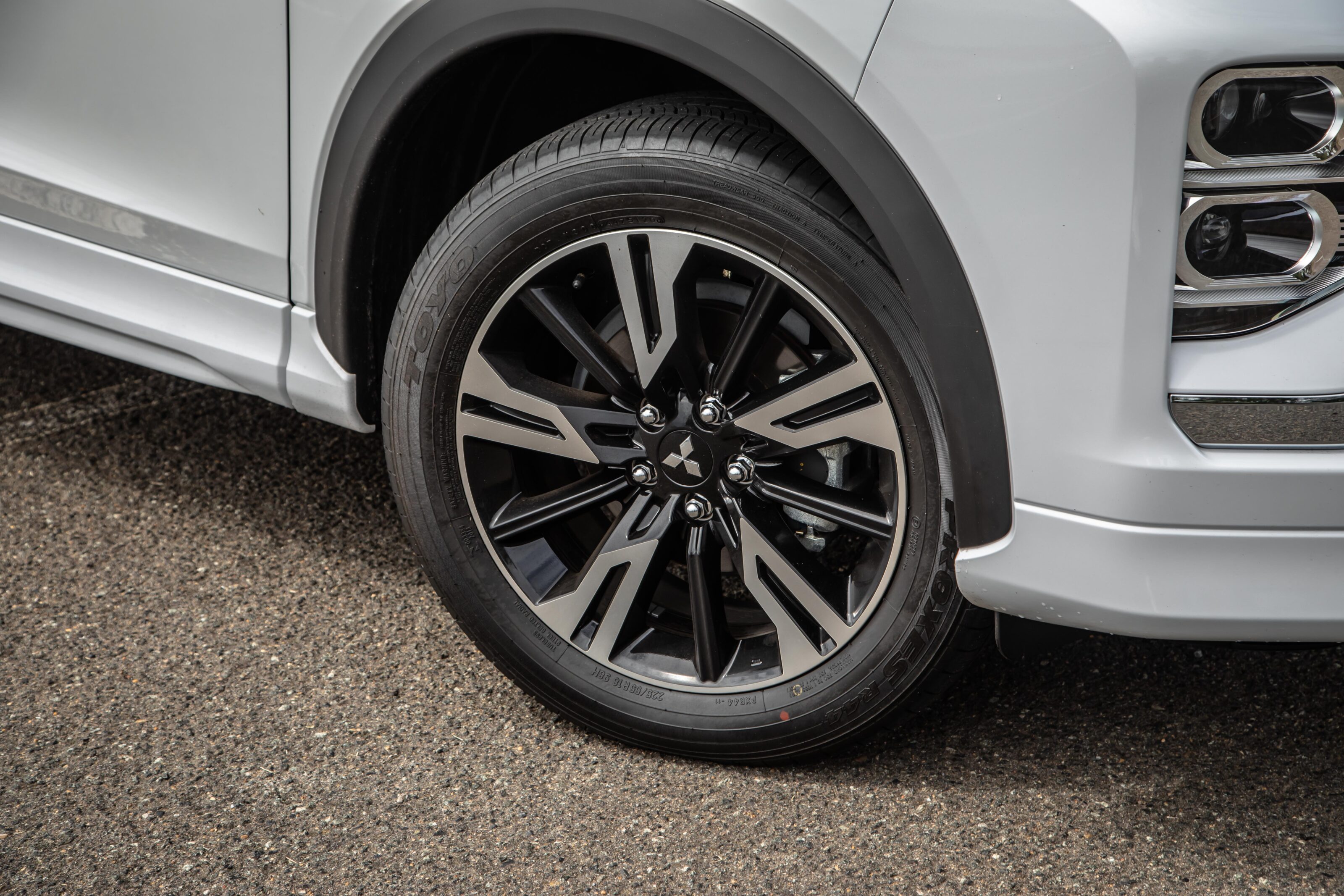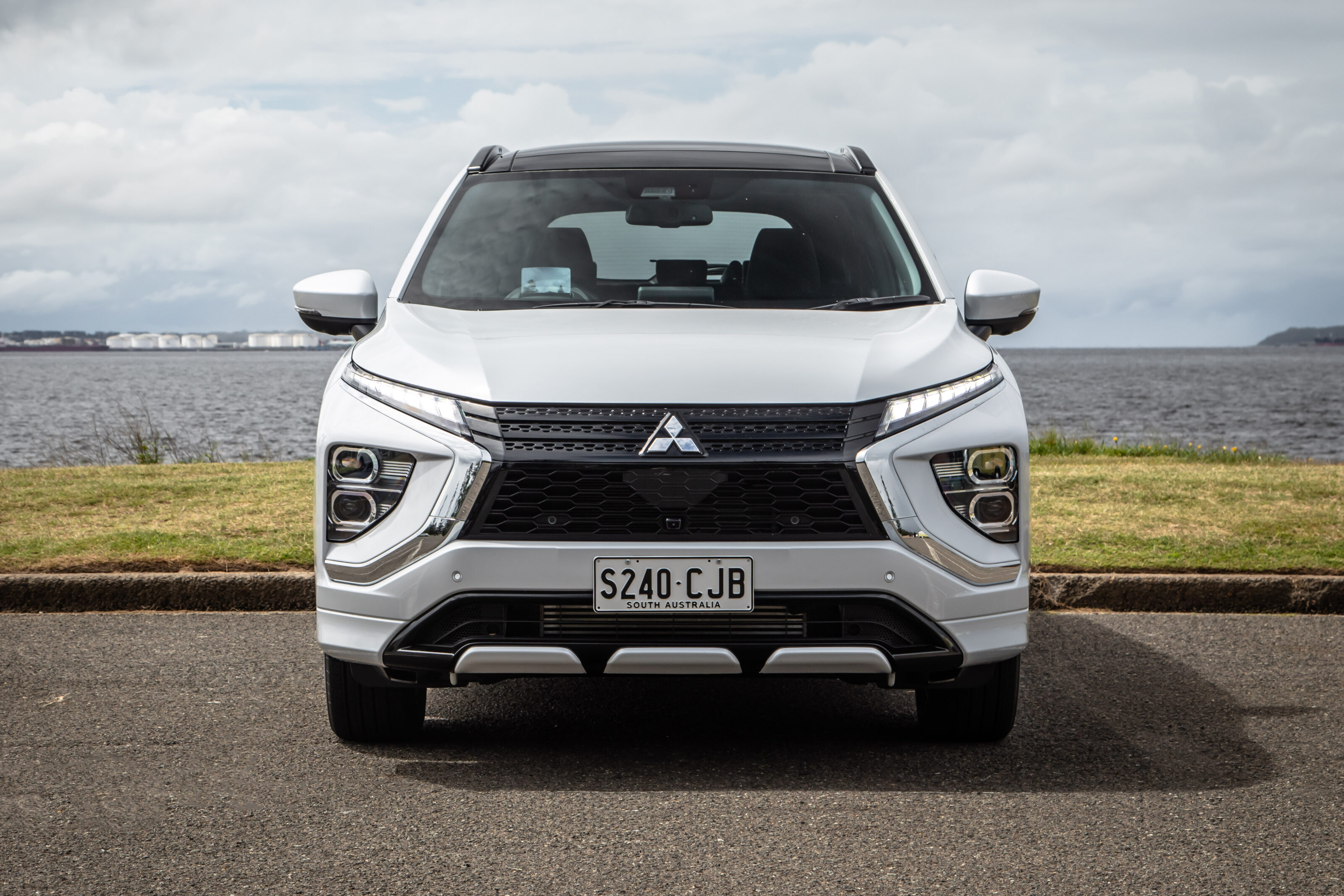
Score breakdown
Things we like
- 1.5 turbo engine is a good unit
- Good interior space, flexible rear seating
- Comfortable and quiet ride
- 10-year warranty (with conditions)
Not so much
- Bland dynamics
- Slow-responding CVT automatic
The Eclipse Cross may not go down in the pantheon of great Mitsubishis, but it does have appeal as a small but spacious urban SUV.
I’ll say, I do hold a certain admiration for the company’s ability to spin so many cars off an ancient hatchback platform. The ASX and Eclipse Cross (and the last Outlander) look nothing like the old Lancer with which they share a platform, but they’ve gone on to carry Mitsubishi through more than a decade of uncertain times.
The Eclipse Cross was meant to do things for the brand, with striking styling and a new turbo engine, all of it intended to modernise the brand’s image. It certainly set tongues wagging with its bold styling, but it didn’t fire as well as the company hoped, getting absolutely rinsed by the older but smartly value-focused ASX.
Then came this facelift to push the Eclipse Cross closer the mid-size SUV segment, stretching the body to do battle with some very fierce competition.

Pricing and features
Mitsubishi does really push the ‘value for money’ idea, and the good news is that you get quite a bit of gear for $39,490 (before on-road costs) in the Exceed with front-wheel drive or $41,990 for the all-wheel-drive version tested here. (Again before on-road costs.)
You’ll pay a heck of a lot more for the plug-in hybrid (PHEV) I drove a few weeks ago.
For your money you get 18-inch alloy wheels, an eight-speaker stereo, dual-zone climate control, front, side and reversing cameras, keyless entry and start, front and rear parking sensors, wireless charging pad, part-digital dashboard, adaptive cruise control, electric and heated front seats, sat-nav, auto LED headlights, auto wipers, head-up display and a space-saver spare.

The central 8.0-inch touchscreen runs a very basic and ageing media system, albeit saved by Apple CarPlay and Android Auto.
A five-star ANCAP safety rating hails from 2017, with seven airbags, ABS and stability controls, blind-spot monitoring, forward auto emergency braking with pedestrian detection, reverse cross-traffic alert and lane departure warning.
If you have babies or younger children to cart around, they’re looked after with two ISOFIX points and three top-tether anchors.

Comfort and Space
Redemption for the Eclipse Cross comes in the form of really rather impressive interior space. It’s especially good in the back whether you’re comparing this against its original compact SUV segment or its mid-size competition.
Where it sits now the space is competitive, certainly giving Kia’s Sportage and Mazda’s CX-5 a run for their money with plenty of leg and knee room and even with the two-piece sunroof, plenty of headroom. The centre armrest features a pair of cup holders and the doors provide bottle holders, too.
Front seat passengers have two cup holders in the centre console and bottle holders in the doors. There is also a handy-sized bin under the climate controls, which is a good space for your phone.
The front seats are really comfortable, too, with plenty of adjustment. Irritatingly, the angle of the steering wheel is a little awkward and I can never get the seating position exactly the way I like it.

Despite work to increase the boot space, you still only start with 405 litres. That’s not bad, of course, but it’s not going to break any records.
With the seats down, you get 1172 litres, also not record-breaking. I will say, however, that I think both of these stats are misleadingly conservative and I reckon they’re probably off by about 10 per cent.
That requires an explanation and the best one I can give you is that it just doesn’t feel right lined up next to its competition. I have no hard evidence, so make of that what you will.
You can tow up to 1600kg with a braked trailer and 750kg without brakes. On the trailer, obviously.

On the road
The basics
| Engine: | 1.5-litre four-cylinder turbo-petrol |
|---|---|
| Power: | 110kW @ 5500rpm |
| Torque: | 250Nm @ 2000-3500rpm |
| Transmission: | continuously variable auto |
| Fuel consumption: | 7.3L/100km (combined) |
The headline act of the Eclipse Cross is the 1.5-litre turbo petrol four-cylinder that so far has made its sole appearance, at least in Australia, in this car. It’s a neat unit, developed by Mitsubishi to stave off emissions regulations.
Despite its small capacity, it knocks out 110kW and 250Nm, driving all four wheels through an automatic continuously variable transmission (CVT).
That’s not bad going, although those power figures belong in the compact SUV segment because at this price point it’s getting soundly beaten by the Kias and Hyundais with a turbo 1.6. Similarly, while those two brands have the same annoying twin-clutch transmission, they’re still better than Mitsubishi’s CVT.
CVTs are absolutely not my favourite kind of transmission at the best of times, but they work well in low-torque applications as long as they’re well-calibrated. 250Nm is not exactly earth-moving and nor is it weedy, but the CVT is not up to the job, just as it isn’t in the ASX with the 2.0-litre engine.

It’s slow to react to throttle inputs, it flares when you get off the accelerator and too often you need to pick one of the eight fake gear ratios accessible via the admittedly lovely (and always out of place) alloy paddles.
In cars like this, the paddles should be for fun rather than because you’re listening to a lawnmower symphony playing out under the bonnet and getting nowhere fast.
At least the engine does haul this ton-and-a-half car along with some enthusiasm, but again it’s nothing special. The torque spread seems better in the real world than it does on paper so perhaps the CVT does a better job than I give it credit for, but it’s just not a car whose keys I want to wrestle control of.
The chassis itself is just another iteration of the same platform. While boasting a multi-link rear end where some might save some cash with torsion beams, the Eclipse wallows about and really kneels down on its outside front tyre in even moderate cornering.

The ride is better than the PHEV and better again than the ASX, but it’s a bit mystifying how after so long the company has not got its head around how to balance the ride and handling. And don’t get me started on the too-light and notably remote steering.
The Eclipse was with us during yet another dreary week of Sydney weather. Where it really shone was in the wet, the S-AWC system handling the atrocious weather so well that it felt like a different car according to my wife. Planted and secure-feeling, it shrugged off the standing waters, slippery tarmac and giant potholes. But when it dried up again, it was back to being deeply ho-hum.
Mitsubishi’s turbo engine does deliver on some of its efficiency promise, with a week in urban driving yielding a 9.2L/100km against its claimed 7.3L/100km.
It uses a lot less fuel than the ASX, which has never used less than 12.5L/100km in my hands. Although you deserve a prize for finding the trip computer’s average fuel figure, buried as it is in the menus.

Ownership
Mitsubishi offers a 10-year warranty on all its cars, but you can’t just get on the road and go for a moonshot as there are some caveats. First, it applies to the first 150,000km, which for most people is fine.
Second, and this applies to all owners, you have to service it at a Mitsubishi dealership or risk reverting to the old standard warranty of five years and unlimited kilometres. Only Kia does a better job of looking after high milers.
Servicing is covered by a capped-price program, which is mighty helpful and matches the warranty’s length of 10 years/150,000km. Six of the services cost $299, two cost $399 and the remaining visits a sobering $599. That gives you a ten-year service bill of $3790 or $379 per year. That’s reasonable in the context of the segment – and quite a bit cheaper than the Euros.

VERDICT
The Eclipse Cross does have good points. It’s roomy, reasonably well priced and undeniably striking to look at. I don’t mind the styling because it does show a bit of spark where over the last decade there has been none.
The new Outlander is proof that Mitsubishi can do a hell of a lot better than this, but the average buyer will find an Eclipse Cross perfectly agreeable because it mostly is. I’m not entirely sure, as ever, that the Exceed is the one to go for with its largely cosmetic additions over the Aspire and XLS variants.
It does, however, feature all-wheel drive, which for some is worth the extra cost and, as I discovered, quite good when it’s slippery. So if you want or need all-wheel drive, the Exceed is for you. If you don’t, and the sunroof is of no interest to you, look to the lower-grade models.

2022 Mitsubishi Eclipse-Cross Exceed specifications
Score breakdown
Things we like
- 1.5 turbo engine is a good unit
- Good interior space, flexible rear seating
- Comfortable and quiet ride
- 10-year warranty (with conditions)
Not so much
- Bland dynamics
- Slow-responding CVT automatic
We recommend
-
 Reviews
Reviews2020 Mitsubishi Eclipse Cross review
Everything you need to know about the Mitsubishi Eclipse Cross small-SUV.
-
 News
News2021 Mitsubishi Eclipse Cross pricing and features
Mitsubishi Eclipse Cross scores a futuristic redesign for 2021, with hybrid powertrain now on the menu
-
 News
News2025 New Car Calendar: All the new cars coming to Australia
Take a look at our list of what is expected to launch in Australia in 2025 – plus those we might not see locally just yet




